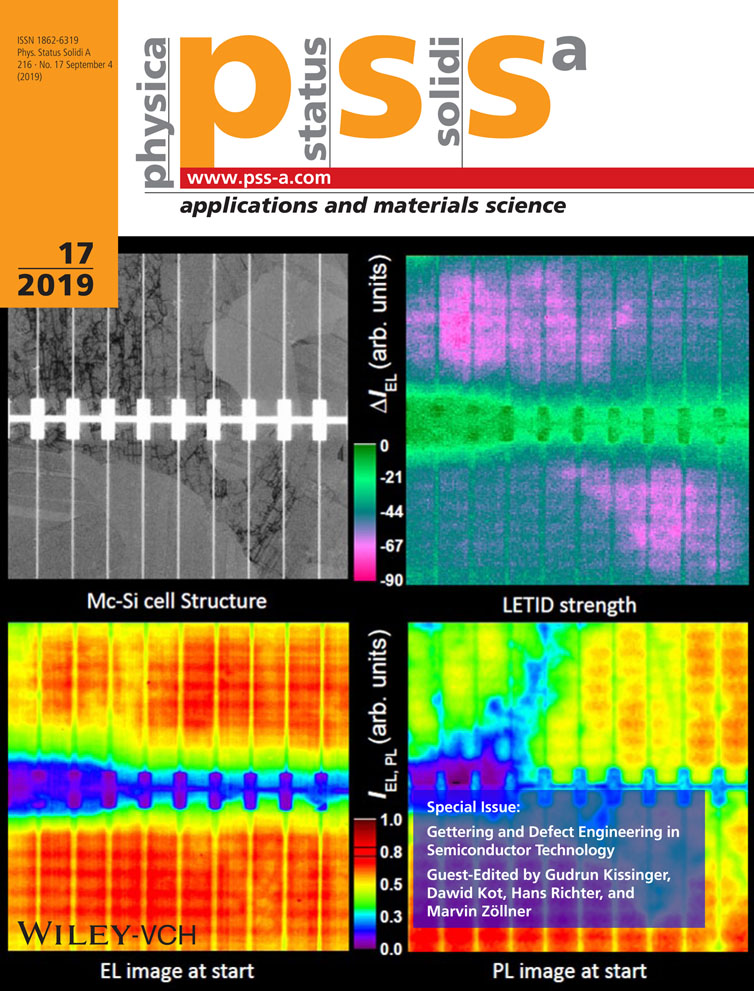The Photo-Elastic Constant of Silicon Reviewed in Experiment and Simulation
Abstract
Results of experiments on single-crystalline silicon wafers that allow for the determination of the degree of photo-elastic anisotropy Ape are presented. Ape is introduced as an absolute value of (π11 − π12 − π44)/(π11 − π12 + π44), where π11, π12, and π44 are the piezo-optical coefficients. These experiments are performed using the measurement system scanning infrared depolarization (SIRD) imager equipped with a special calibration set-up that produces a defined diametrical loading of the wafer. The generated depolarization maps are compared with simulation results based on a classic 2D stress model, taking the crystallographic anisotropy of silicon into account, by applying the full tensor calculus. The best-matching material constants used for simulation are compared with data being available from external publications. Ape is determined to be 0.21 ± 0.01 at a wavelength λ = 1.3 μm. Conclusions in view of current studies on other semiconductor material systems are discussed.
Conflict of Interest
The authors declare no conflict of interest.




